Anti-aircraft missile systems of the Buk family
ZRK 9K37 "Beech"
The development of new anti-aircraft systems of the Buk family began in accordance with the resolution of the USSR Council of Ministers on January 13 of 1972. The decree determined the organizations involved in the project and the main requirements for it. According to the first technical task, the prospective air defense missile system was to replace the existing 2K12 “Cube” complex in the troops. In addition, it was required to create a rocket suitable for use both in the Buk complex and in the M-22 Uragan marine anti-aircraft system.
A promising anti-aircraft complex was intended to equip the military air defense, which affected the requirements for it. The developers were required to mount all the units of the complex on a self-propelled chassis and provide the ability to work in the same battle formations with tanks and other armored vehicles. The complex had to deal with aerodynamic targets flying at speeds up to 800 m / s at low and medium altitudes at ranges up to 30 km. It was also required to ensure the possibility of hitting a target maneuvering with an overload of up to 10-12 units and using electronic countermeasures systems. In the future, it was planned to “teach” the complex how to deal with operational-tactical ballistic missiles.
The Scientific and Research Institute of Instrument Engineering (NIIP) was chosen as the lead developer of the “Buk” air defense system 9K37. In addition, a number of other organizations were involved in the project, including the NGO Fazotron of the Ministry of Radio Industry and the Machine-Building Design Bureau Start. A.A. was appointed the chief designer of the whole anti-aircraft complex. Rastov. The creation of the command center of the complex was headed by G.N. Valaev, who was later replaced by V.I. Sokiran. The self-propelled fire installation was developed under the direction of V.V. Matyasheva, and the leader of the semi-active homing head was I.G. Hakobyan The staff of the Scientific Research Institute of Measuring Instruments headed by A.P. Vetoshko (later these works were led by Yu.P. Schekotov).
It was planned to complete all work on the creation of the 9K37 complex by the middle of 1975. However, in the spring of 74, it was decided to divide the work on the project into two separate areas. In accordance with the decision of the Council of Ministers of 22 in May of 1974, it was necessary to continue the creation of a new air defense system in two stages. At first, it was necessary to bring a new 3М38 rocket and a self-propelled fire installation (SDA) to mass production. At the same time, the latter should have been able to use the existing 9М9М3 missiles of the Kub-М3 complex, as well as be built using the components of the existing system.
It was assumed that in the autumn of 1974, the 9K37-1 “Buk-1” complex would be put to the test, and the development of the “full-fledged” 9К37 SAM, based on new components, would continue according to the previously established schedule. Such an approach to the creation of new anti-aircraft systems was to ensure the earliest possible start of production and supply of new equipment, capable of significantly increasing the combat potential of ground forces units.
The complex 9K37 includes several major components. To monitor the air situation, it was proposed to use the 9C18 “Kupol” detection and targeting station (SOC), for launching the missiles, the 9А310 self-propelled firing system (SOW) and the 9А39 start-charging unit (ROM) should be used. The coordination of the operations of the complex was to be carried out by the command post 9C470. The target was hit by an anti-aircraft missile (Zour) 9М38.
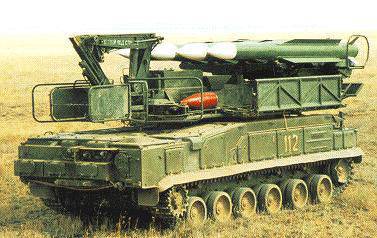
Start-charging unit 9А39 complex "Buk"
The 9X18 “Dome” was a self-propelled tracked vehicle equipped with a three-axis coherent-pulse radar station designed to monitor the situation and provide information about targets to the command post. On the roof of the base chassis was installed swivel antenna with electric drive. The maximum target detection range reached 115-120 km. In the case of low-flying targets, this parameter was seriously reduced. Thus, an aircraft flying at an altitude of 30 m could be detected only from 45 km. The SOC equipment had the ability to automatically tune the operating frequency to preserve operability when active interference was used by the enemy.
The main task of the Kupol station was to search for targets and transfer data to the command post. During the 4,5 review period, 75 marks were transmitted. The command post 9C470 was made on the basis of a self-propelled chassis and equipped with all the necessary equipment for processing information and issuing target designation to launchers. The calculation of the command post consisted of six people. For this, the 9C470 machine was equipped with communications and data processing equipment. The equipment of the command post allowed for one NOC review period to process reports on 46 targets at distances up to 100 km and altitudes up to 20 km. Provision was made for the firing installations of information on six targets.
The main means of attack of the enemy aircraft was to be the self-propelled 9A310 fire installation. This machine was a further development of the SOO9A38 complex of the Buk-1 complex. On a self-propelled tracked chassis mounted rotary launcher with four guides for missiles and a set of special electronic equipment. In front of the launcher there was a target tracking radar, also used for missile guidance.
For the transportation of additional ammunition and charging the SDU, the 9А39 starting and loading unit was included in the Buk air defense system. This tracked vehicle is designed to carry eight missiles and reload the SDN 9А310 launcher. Missiles were transported on four fixed lodgements and a special launcher. Depending on the existing situation, the calculation of the machine could overload the missiles from the launcher to the SOU or launch independently. However, due to the lack of its own tracking radar, external target designation was required. For reloading missiles provided a special crane.
The 9М38 rocket was made in a single-stage scheme. It had a cylindrical body with a large elongation with a lively head fairing. In the middle part of the body X-shaped wings of small elongation were provided, in the tail - the rudders of similar design. The rocket with a launch weight of 690 kg and a length of 5,5 m was equipped with a semi-active radar homing head, a high-explosive fragmentation warhead and a dual-mode solid-fuel engine. In order to avoid centering changes as the charge burned out, the engine was placed in the central part of the body and equipped with a long nozzle-gas duct.

Scheme Zur 9М38
The new anti-aircraft missile system 9K37 "Buk" allowed to attack targets at ranges up to 30 km and altitudes to 20 km. Reaction time was 22 s. Getting ready for work took about 5 minutes. A missile accelerating in flight to 850 m / s could hit a fighter target with a probability to 0,9. The defeat of a helicopter with a single missile was provided with a probability up to 0,6. The probability of the destruction of a cruise missile of the first SAM did not exceed 0,5.
The joint tests of the new air defense system started in November 1977, and continued until the spring of 1979. The test site was the Emba test site. During the tests, the combat work of the complex was worked out in various conditions and for various conventional purposes. In particular, standard means (SOC 9X18) or other similar stations were used to monitor the air situation. In the course of test launches, an attack of training targets was made using the warhead's radio fuse. If the target was not hit, the second rocket was launched.
During the tests, it was found that the new 9K37 SAM system has a number of important advantages over the existing technology. The composition of radio-electronic equipment SOC and SOU ensured greater reliability of target detection due to simultaneous monitoring of the air situation. The 9-310 six-car complex could simultaneously attack up to six targets. At the same time, the possibility of simultaneous execution of several combat missions at the expense of own equipment of self-propelled fire installations was not excluded. The updated composition of the equipment of various elements of the complex, including the rocket, provided greater noise immunity. Finally, the rocket carried a warhead of greater weight, which made it possible to increase the probability of hitting the target.
According to the results of tests and improvements ZRK 9K37 "Buk" in 1990, was adopted. As part of the air defense of the ground forces, new systems were used as part of anti-aircraft missile brigades. Each brigade of command and control from the “Polyana-D4” ACS, as well as four divisions, was included in each such compound. The division had its own command post 9С470, a detection and target station 9С18 and three batteries with two SOU 9А310 and one 9А39 ROM in each. In addition, the brigades had communications, technical support and service units.
ЗРК 9К37-1 «Бук-1»/«Куб-М4»
In connection with the need to start retooling the air defense units of the ground forces as soon as possible in 1974, it was decided to develop a simplified version of the 9K37 complex, built using existing components and assemblies. It was assumed that the new Buk-9, called 37K1-1, would be able to supplement the existing Cube-M3 systems. So, in the composition of each of the five batteries of the regiment there should have been a new self-propelled fire installation 9А38 of the Buk-1 complex.
Calculations showed that the cost of one machine 9А38 will be about a third of the cost of all other means of the battery, but in this case it will be possible to provide a noticeable increase in combat capabilities. The number of regiment target channels could be increased from 5 to 10, and the number of ready-to-use missiles grew from 60 to 75. Thus, the modernization of air defense units with the help of new combat vehicles fully paid off.
By its architecture, the 9А38 sow was a little different from the 9А310 machine. On a tracked chassis mounted rotary platform with a launcher and a radar station for tracking, tracking and illumination 9C35. Launcher SAU 9А38 had interchangeable guides for the use of two types of missiles. Depending on the situation, the combat mission and the available resources, the complex could use the new 9М38 missiles or those existing in the 9М9М3 troops.
State tests of the 9K37-1 air defense system started in August of the 1975 year and were conducted at the Emba range. In the tests, a new SOU 9А38 and existing machines of other types were used. Target detection was carried out using self-propelled reconnaissance and guidance 1C91М3 of the Cube-М3 complex, and the missiles were launched from the SOO 9А38 and 2П25М3. Missiles of all available types were used.
During the tests, it was found that the 9С35 radar of the 9А38 self-propelled firing system is capable of detecting air targets at distances up to 65-70 km (at altitudes of at least 3 km). When the target was flying at a height of no more than 100 m, the maximum detection range was reduced to 35-40 km. At the same time, the real parameters of target detection depended on the limited capabilities of the Cube-M3 vehicles. Combat characteristics, such as the range or height of the target, depended on the type of rocket used.
The new 9K37-1 SAM system as part of the 9А38 self-propelled fire installation and 9М38 rocket was adopted in 1978 year. As part of the adoption of the complex "Buk-1" received a new designation. Since the SOW and the rocket were in fact only an addition to the existing facilities of the Kub-М3 complex, the complex using the 9А38 machine received the designation 2КХNUMXМ12 "Cube-М4". Thus, the 4K9-37 air defense system, being a simplified version of the Buk complex, was formally assigned to the previous Cube family, which at that time was the basis of the ground defense systems of the ground forces.
Buk-М1 SAM
30 November 1979, the new resolution of the Council of Ministers, which required the development of a new version of the Buk. This time it was necessary to increase the combat characteristics of the complex, as well as to increase the level of protection against interference and anti-radar missiles. By the beginning of 1982, the organizations involved in the development of the project completed the creation of updated elements of the complex, due to which it was planned to increase the basic parameters of the system.
In the Buk-М1 project, it was proposed to upgrade the on-board equipment of several machines, which made it possible to improve their performance. At the same time, the modernized complex had no significant differences from the existing one. Due to this, various machines from the “Buk” and “Buk-М1” systems were interchangeable and could work as part of one unit.
In the new project all the main elements of the complex were improved. The Buk-М1 SAM should have been used to detect targets using the modernized SOC 9С18М1 "Dome-М1". On the tracked chassis it was now proposed to mount a new radar with a phased antenna array. In order to increase the degree of unification of ZRK machines, it was decided to build the Kupol-MNNUMX station based on the GM-1M chassis, similar to that used in the other elements of the complex.
To process information received from the SOC, it was now proposed to use the updated command post 9C470М1 with a new set of equipment. The upgraded command post provided simultaneous reception of data from the SOC and from the air defense command post of the division. In addition, a training regime was provided, which allowed the training of calculations of all means of the complex.
The 9А310М1 self-propelled firing system Buk-М1 ADMS received an updated tracking and illumination radar. Due to the new equipment, it was possible to increase the target range on the 25-30%. Prior to 0,6, the likelihood of recognizing aerodynamic and ballistic targets was increased. To improve the noise immunity of the SOW, 72 had the letter frequencies of the backlight, i.e. twice as much as the base 9A310.
Implemented innovations have affected the combat effectiveness of the complex. While maintaining the general parameters of the range and height of destruction of targets, as well as without using a new missile, the probability of hitting an enemy fighter by one missile defense system increased to 0,95. The probability of hitting the helicopter remained at the same level, and a similar parameter for ballistic missiles rose to 0,6.
From February to December 1982 of the year at the Emba test site, tests of the upgraded 9K37 “Buk-M1” system were conducted. The checks showed a noticeable increase in the basic characteristics in comparison with the existing complexes, which made it possible to adopt the new system. The official adoption of the complex for the armament of the air defense forces of the ground forces took place in 1983 year. Serial production of modernized equipment was carried out at enterprises that had previously participated in the construction of the Buk complexes of the first two models.
Serial technology of the new type was operated in the anti-aircraft brigades of the ground forces. Elements of the Buk-М1 complex were distributed over several batteries. Despite the modernization of individual facilities of the complex, the staff organization of the anti-aircraft units did not change. In addition, if necessary, simultaneous use of machines of the Buk and Buk-М1 complexes in one divisions was allowed.
Buk-М1 air defense system became the first system of its family offered to foreign customers. The complex was supplied to foreign armies called "Ganges". For example, in 1997, several complexes were transferred to Finland as part of the repayment of public debt.
ZRK 9K317 "Buk-M2"
At the end of the eighties, the development of an updated Buk family air defense system with the new 9М317 rocket, which was designated the Buk-М9 317К2 rocket, was completed. Due to the new guided munition, it was planned to significantly increase the range and height of target destruction. In addition, the use of a number of new equipment installed on different machines of the complex should have affected the characteristics of the system.
Unfortunately, the economic situation in the country did not allow adopting a new complex in the late eighties or early nineties. The issue of upgrading the equipment of the air defense units was finally resolved at the expense of the “transitional” complex “Buk-М1-2”. At the same time, the development of the 9K317 system continued. Work on the updated project “Buk-М2” and its export version “Buk-М2Е” continued until the middle of the two thousandth.
The main innovation of the project "Buk-M2" was the new guided missile 9М317. The new missile defense system differed from the 9М38 in shorter wings, the modified hull design and starting weight of the order of 720 kg. By changing the design and using the new engine, it was possible to increase the maximum firing range to 45 km. The maximum altitude of the attacked target increased to 25 km. To expand the combat capabilities of the corps, the rocket got the opportunity to turn off the remote fuse with the undermining of the warhead by the contact command. A similar mode of operation is proposed for rocket use against ground or surface targets.
The 9K317 complex received an updated 9А317 type sow with a GM-569 tracked chassis. The overall architecture of the firing unit remained the same, but the new machine is built on the basis of modern element base and new equipment. As before, the JMA is capable of independently finding and tracking a target, launching an 9М317 rocket and tracking its trajectory, making adjustments if necessary with the help of a radio command system.
SOU 9А317 is equipped with tracking and illumination radar with a phased antenna array. The station is able to track targets in a sector of width 90 ° in azimuth and from 0 ° to 70 ° in elevation. Target detection at distances up to 20 km is provided. In tracking mode, the target can be within a sector of width 130 ° in azimuth and from -5 ° to + 85 ° in elevation. The station simultaneously detects up to 10 targets and can provide a simultaneous attack of four.
To improve the performance of the complex and ensure work in difficult conditions, the self-propelled fire installation has an optical-electronic system with day and night channels.
The Buk-М2 complex can be completed with two types of starting and charging equipment. A self-propelled vehicle was developed on the basis of the GM-577 chassis and towed with an automobile tractor. The overall architecture remains the same: four missiles are located on the launcher and can be launched or overloaded on the SOW. Four more are transported on transport crates.
The structure of the modernized complex included a new command post 9C510 based on the chassis of the GM-579 or towed semi-trailer. Command post automation can receive information from surveillance equipment and accompany you to 60 tracks at the same time. It is possible to issue targets for 16-36 goals. Reaction time does not exceed 2 with.
The main means of target detection in the Buk-М2 air defense system is the SOC 9С18М1-3, which is a further development of the family systems. The new radar is equipped with a phased antenna array with electronic scanning and is capable of detecting air targets at ranges up to 160 km. Modes of operation are provided to ensure that targets are detected when active and passive interference is used by the enemy.
The structure of self-propelled / towed means of the Buk-М2 complex was suggested to introduce so-called. station illumination of targets and missile guidance. The new 9C36 is a tracked chassis or towed semi-trailer with an antenna post on a retractable mast. Such equipment allows you to raise the phased array antenna to a height of up to 22 m and thereby increase the radar performance. Due to the relatively high altitude, target detection at distances up to 120 km is ensured. According to the tracking and guidance characteristics, the 9C36 station corresponds to the radar of self-propelled fire engines. It provides support for 10 targets and simultaneous shelling of 4.
All innovations and changes in the composition of the complex have significantly improved its characteristics. The maximum target interception range is declared at the 50 km level, the maximum height is 25 km. The greatest range is achieved when attacking non-maneuvering aircraft. The interception of operational-tactical ballistic missiles can be carried out at ranges up to 20 km and altitudes up to 16 km. There is also the possibility of the destruction of helicopters, cruise and anti-radar missiles. If necessary, the calculation of the air defense system can attack surface or radio-contrast ground targets.
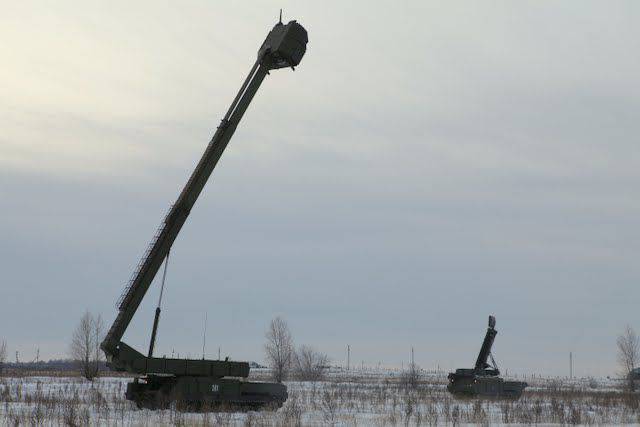
Radar target illumination and guidance missiles 9C36 complex "Buk-М2". Antenna raised in working position
The first version of the project 9K317 was developed in the late eighties, but the difficult economic situation did not allow the new air defense system to be adopted. Operation of this complex in the military began only in 2008 year. By this time, the air defense system has undergone some improvements, which allowed to further improve its characteristics.
Buk-М1-2 ADMS
Numerous economic and political problems prevented the adoption of the new 9К317 air defense system into the series. For this reason, in 1992, it was decided to develop a simplified “transitional” version of the complex, which would use some elements of “Buka-2”, but it would be simpler and cheaper. A similar variant of the air defense system received the designation "Buk-М1-2" and "Ural".
The upgraded Ural air defense missile system includes several upgraded vehicles representing the further development of old types of equipment. For launching rockets and target illumination, the 9А310М1-2 SOU was proposed, working in conjunction with the 9А38М1 starting-loading machine. SOC remained the same - the Buk-М1-2 complex had to use the 9С18М1 station. Auxiliary facilities of the complex have not undergone major changes.
In order to increase the secrecy of work and, as a result, survivability, as well as to expand the range of tasks to be solved, the self-propelled fire installation got the possibility of passive direction finding. For this it was proposed to use a television-optical sight and a laser rangefinder. Such equipment should be used when attacking ground or surface targets.
Modernization of various elements of the complex and the creation of a new rocket made it possible to significantly increase the size of the target firing zone. In addition, the probability of hitting an aerodynamic or ballistic target with one missile increased. There was a full-fledged opportunity to use the 9А310М1-2 SOU as an independent means of air defense, capable of finding and destroying air targets without outside help.
The Buk-M1-2 system was adopted by the Russian army in the 1998 year. Later, several contracts were signed for the supply of such equipment to domestic and foreign customers.
Buk-M2E ADMS
In the second half of the two thousand years, the export version of the Buk-М2 complex under the designation 9К317Е was presented. The Buk-М2Е. It is a modified version of the basic system, which has some differences in the composition of electronic and computing equipment. Due to some improvements, it was possible to improve some indicators of the system, primarily related to its operation.
The main differences of the export version of the complex from the base one are the modernization of electronic equipment, carried out with the extensive use of modern digital computers. Due to the high performance of such equipment allows not only to perform combat missions, but also to work in training mode for the preparation of calculations. Information on the operation of the systems and the air situation is now displayed on liquid crystal monitors.
Instead of the original teleoptic reticle, a tele-thermal system was introduced into the observation equipment. It allows you to find and take on automatic tracking of the target at any time of day and in all weather conditions. Communication facilities, equipment for documenting the work of the complex and a number of other systems were also updated.
The self-propelled fire engine of the 9K317E complex can be built on a tracked or wheeled chassis. Several years ago, a variant of such a combat vehicle based on the MZKT-6922 wheeled chassis was introduced. Due to this, a potential customer can choose a chassis that fully meets their requirements for mobility of the air defense system.
Buk-М3 SAM
A few years ago, the creation of a new Buk anti-aircraft missile system was announced. SAM 9K37М3 "Buk-М3" should be a further development of the family with enhanced performance and combat capabilities. According to some data, it was proposed to fulfill the requirements by replacing the equipment of the Buk-М2 complex with new modern digital equipment.
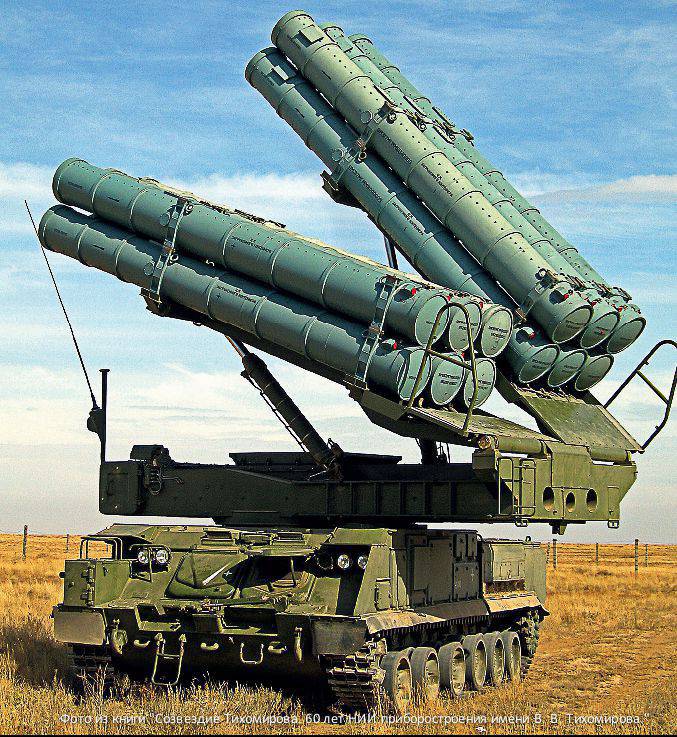
Estimated appearance of the SOU complex "Buk-М3"
According to reports, the means of the complex "Buk-M3" will receive a set of new equipment with enhanced characteristics. Combat qualities are planned to be enhanced through the use of a new missile in combination with a modified self-propelled fire installation. Instead of an open launcher, the new SOU should receive lifting mechanisms with fixtures for transport and launch containers. The new 9М317М rocket will be shipped in containers and launched from them. Among other things, such changes of the complex will increase the ready-to-use ammunition.
On the existing photo of the SOOK of the Buk-М3 complex, a car is depicted on the basis of a tracked chassis with a turntable, on which are fixed two swinging packages with six containers of missiles each. Thus, without cardinal processing, the design of the sow managed to double the ammunition ready for firing.
The detailed characteristics of the Buk-М3 air defense system are still unknown. Domestic media with reference to unnamed sources reported that the new 9М317М rocket will allow attacking targets at ranges up to 75 km and hitting them with a single rocket with a probability of at least 0,95-0,97. It was also reported that by the end of this year the experimental complex “Buk-М3” should pass the whole complex of tests, after which it will be adopted. Serial production and supply of new equipment to the troops, thus, can begin in 2016 year.
According to rumors, the domestic defense industry intends to continue the development of Buk anti-aircraft missile systems. The next family air defense system, according to some data, can receive the designation “Beech-М4”. It’s too early to talk about the characteristics of this system. To date, apparently, even the general requirements for it are not defined.
On the materials of the sites:
http://rbase.new-factoria.ru/
http://pvo.guns.ru/
http://nevskii-bastion.ru/
http://vz.ru/
http://lenta.ru/
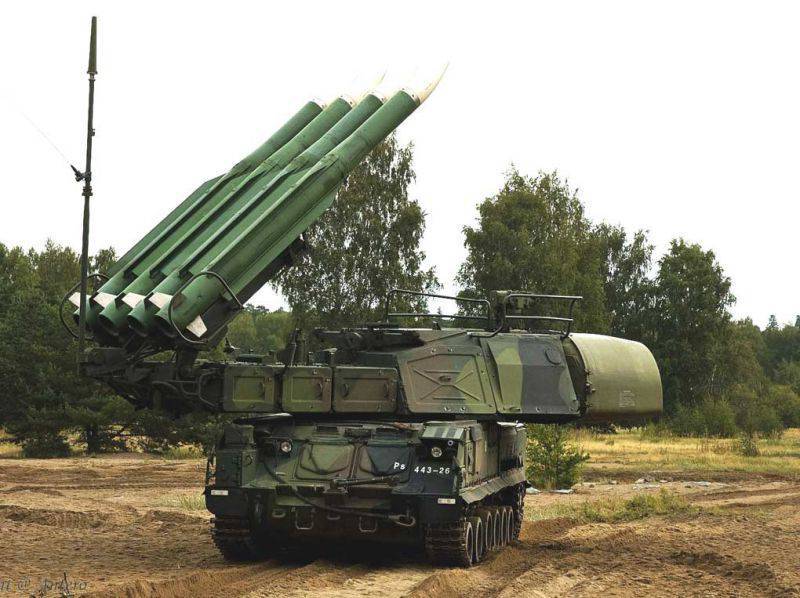
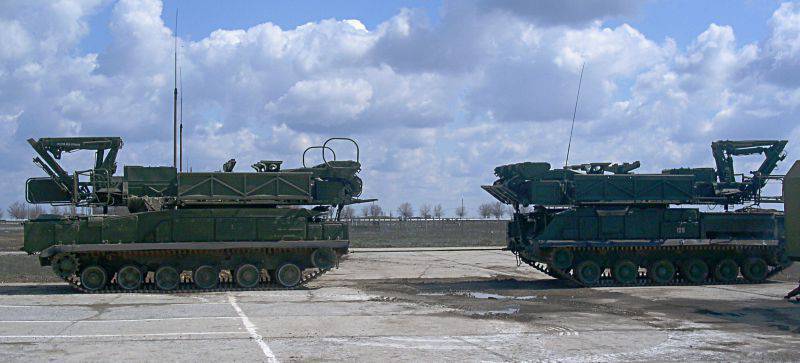
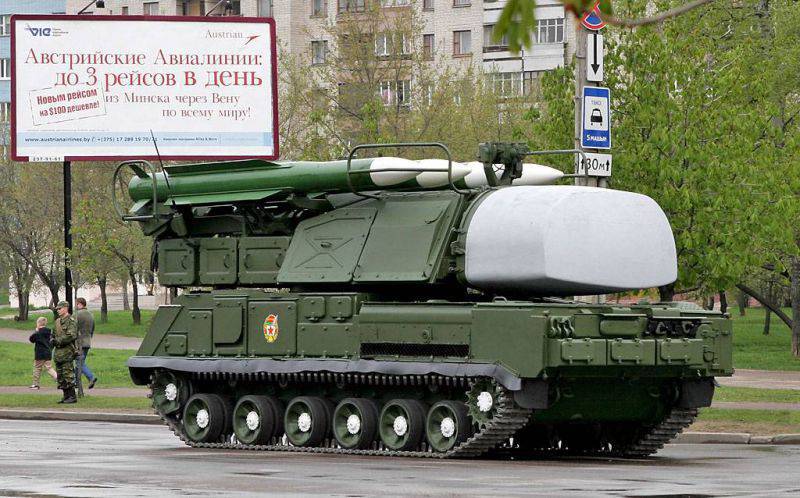
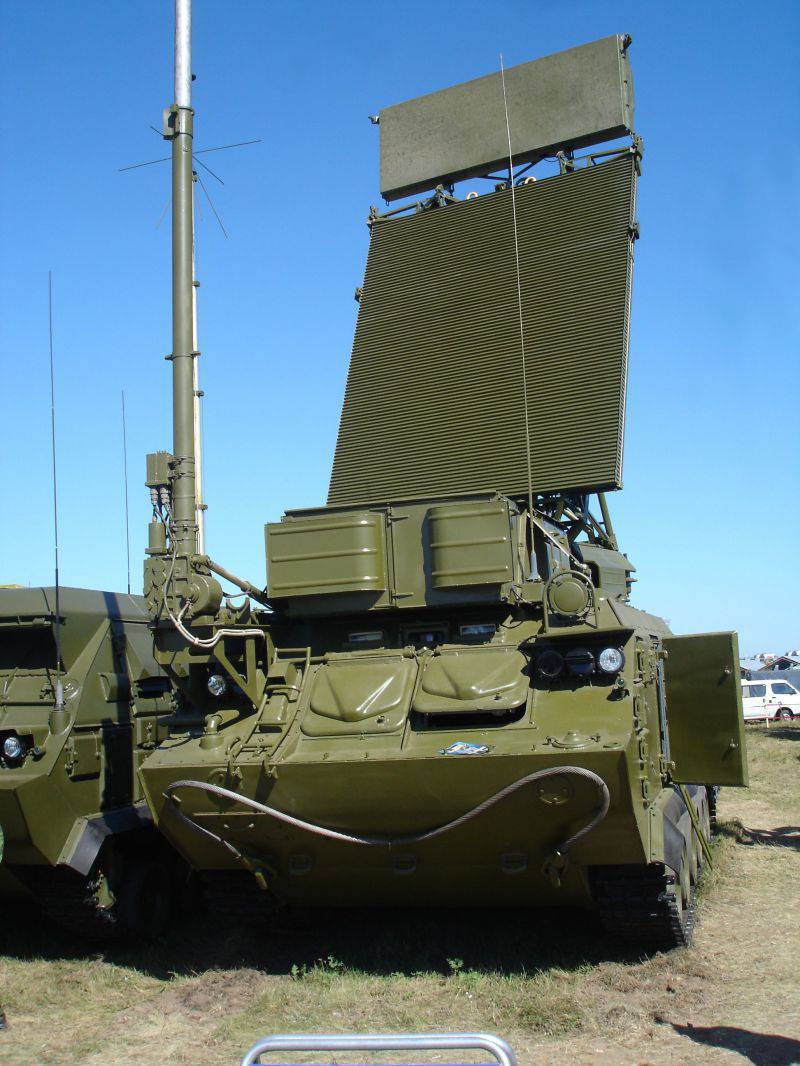
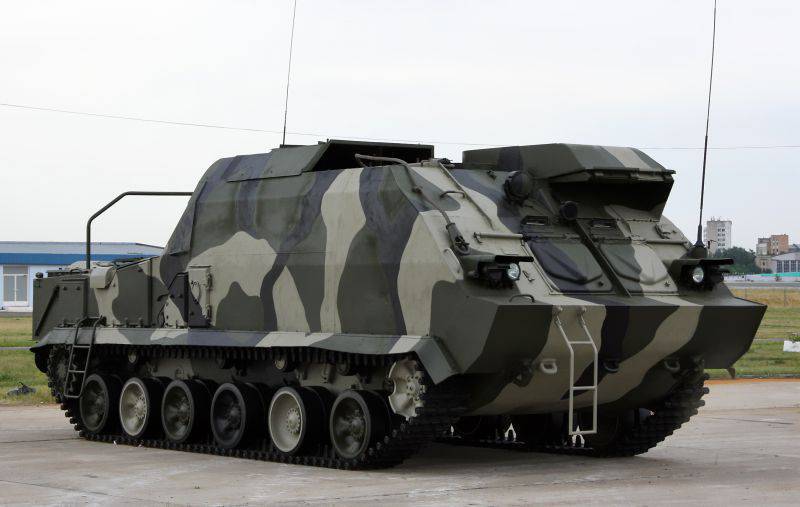
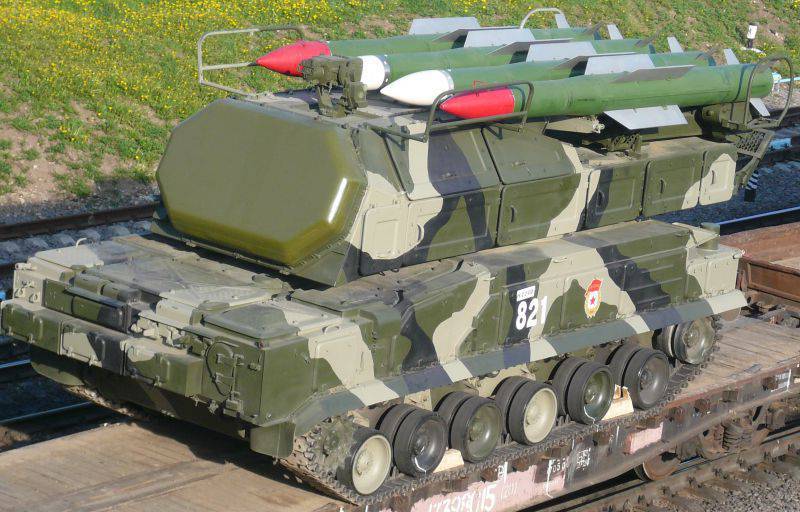
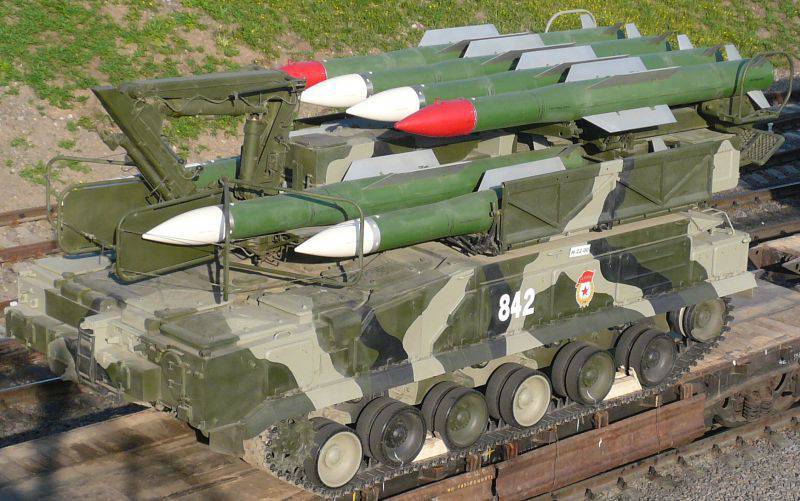
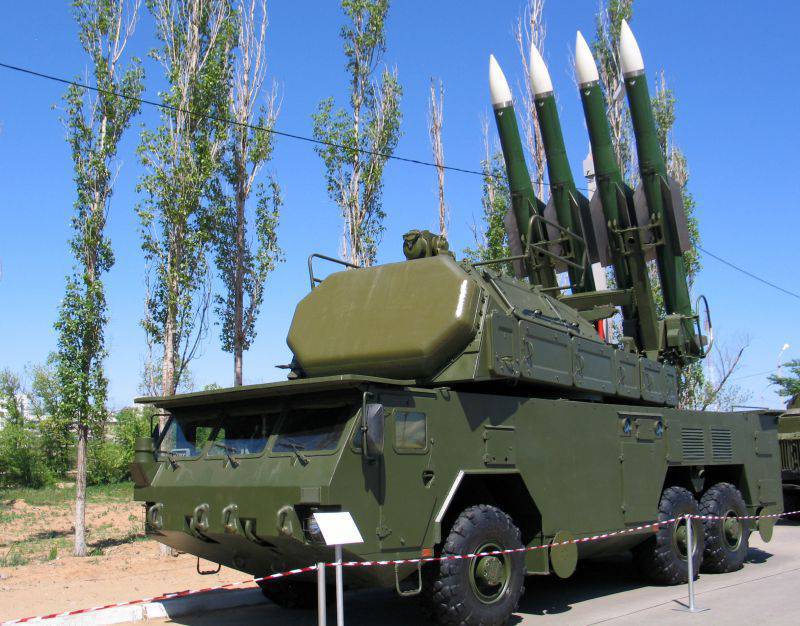
Information